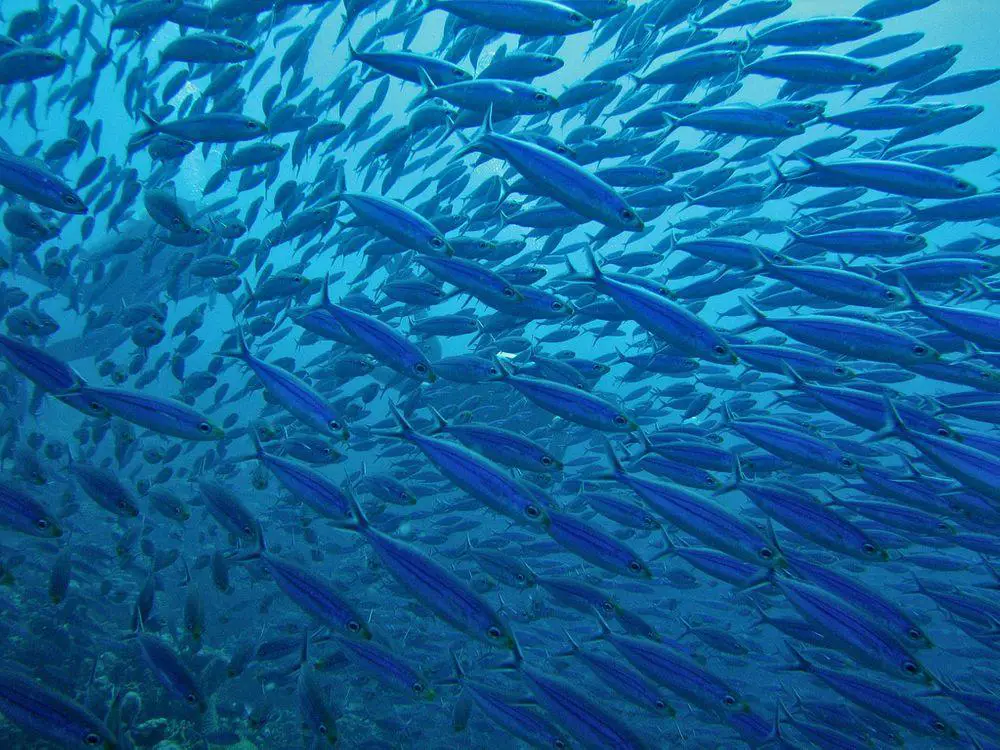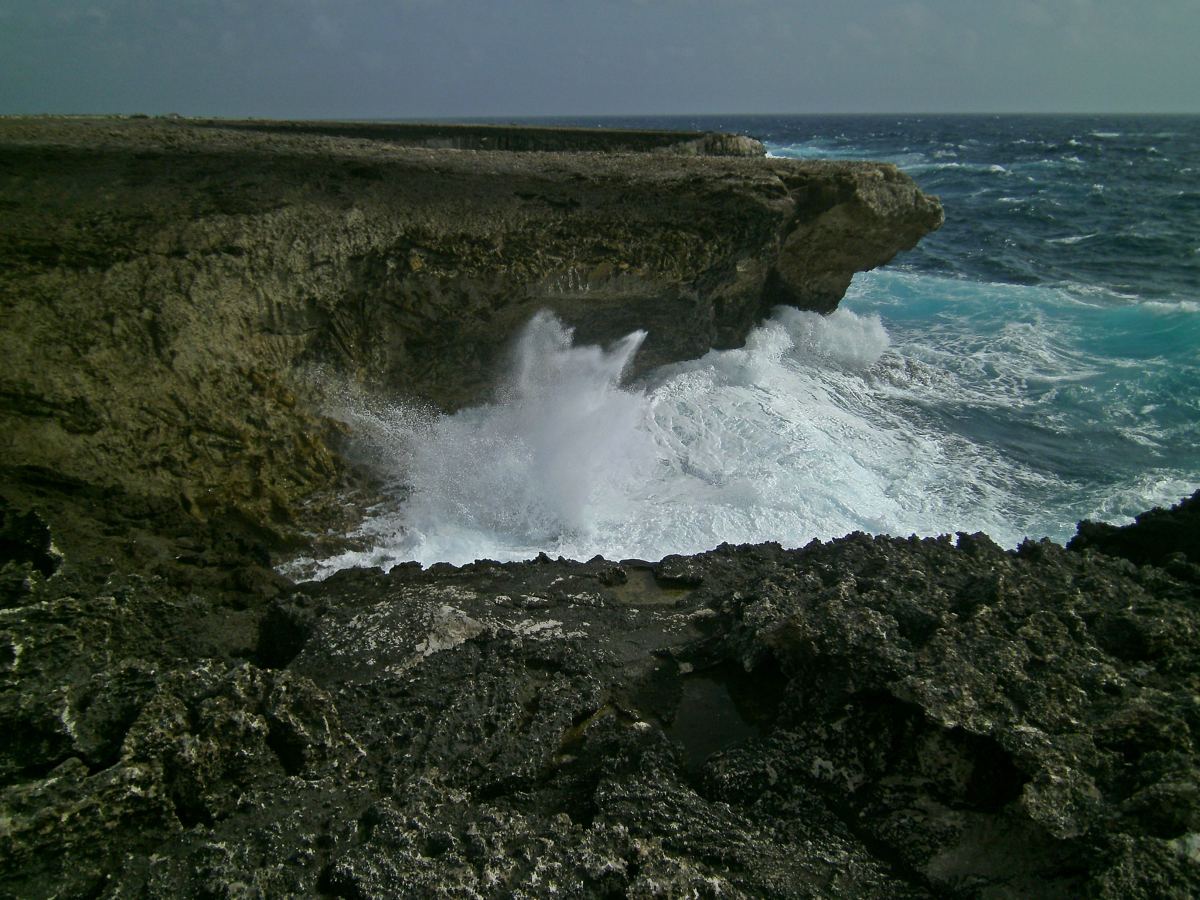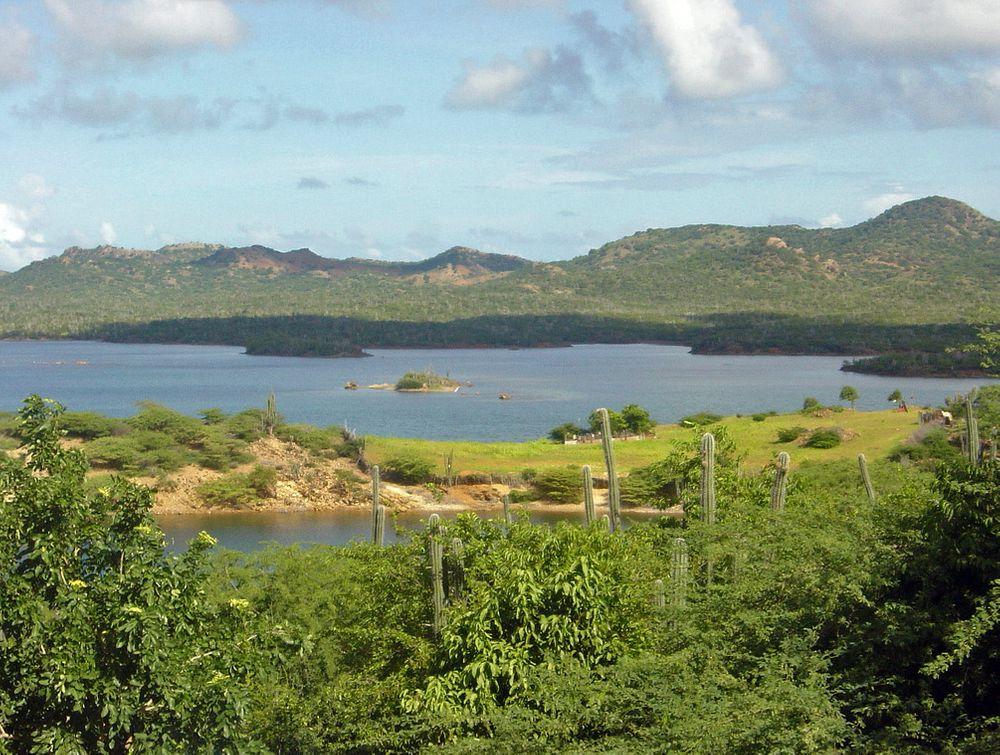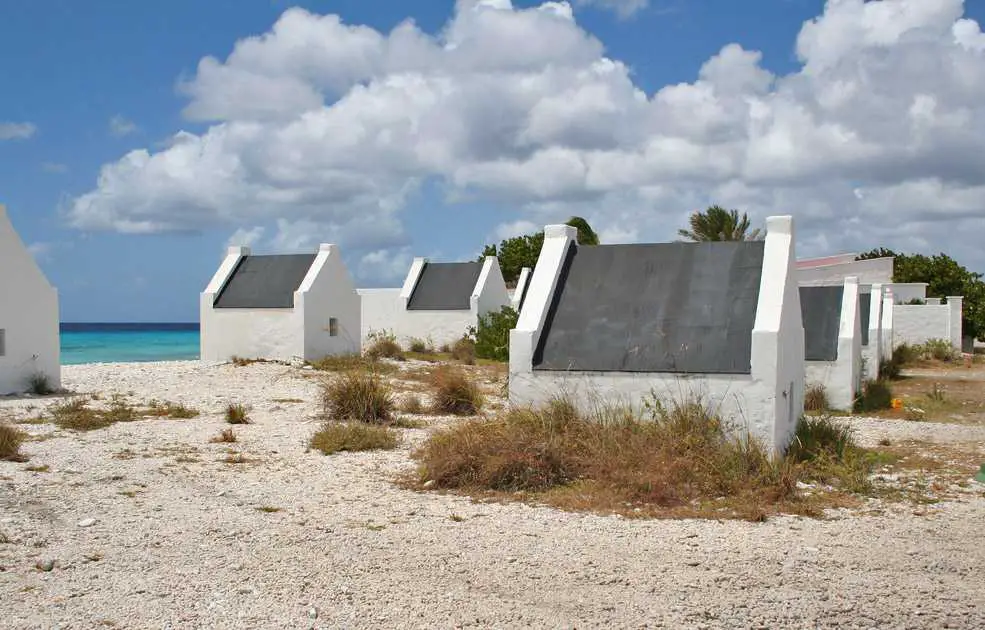Wondermondo 🢖 World 🢖 Wonders of North America 🢖 Wonders of the Caribbean 🢖 Wonders of Bonaire
Territory
Wonders of Bonaire

 Highlights
Highlights
Bonaire is a special municipality of Netherlands, located in Caribbean region.
This 53.5 km² large island has a dry climate. Most tourists come here for the numerous spectacular dive sites, while above the sea there is not that much to see. The dry land here has some interesting natural landmarks – mainly the impressive flamingo habitats in salt lakes and some petroglyph sites in caves and cliff shelters.
Map with the described wonders
If you see this after your page is loaded completely, leafletJS files are missing.
 Top 15 wonders of Bonaire
Top 15 wonders of Bonaire
Geological wonders
Suplado Blowhole in Bonaire
Spectacular blowhole (or two blowholes) at the northern coast of Bonaire.
Biological wonders
Lac Bay mangrove forest
One of the best preserved mangrove forests in the Caribbean. Four species of mangroves grow here.
Pekelmeer
Salt flat with colorful lakes – a habitat of flamingos and numerous other birds.
Goto Meer
Salt lake with a large population of flamingos. In January – July in the lake are breeding several hundreds of these birds.
Archaeological wonders
Onima cave
A former shelter for Caiquetio people around 1500 AD. Adorned with red petroglyphs. Petroglyphs are protected with iron bars.
Petroglyph site northwest from Playa Druifi
A rock shelter with some 10 prehistoric drawings – geometric designs in red and brown colors.
Spelonk petroglyph site
A cave with prehistoric petroglyphs on the ceiling.
Cueba di Roshikiri
Cave with petroglyphs at the entrance.
Pos Calbas petroglyph site
A group of prehistoric drawings in a low cave. Some 15 drawings – geometric designs in red have been preserved.
Grita Caabai petroglyph site
A group of some 15 prehistoric paintings – red handprints – in a rock shelter.
Architecture wonders
Government Building (Governor’s House) in Bonaire
One of the oldest buildings on the island, built in 1837, and renovated in 1973.
Museo Boneriano
Museum in a historical building. Contains collections of shells, prehistoric artifacts, mythological stories, and other interesting items.
Karpata aloe oven
An old structure where aloe was boiled to extract its juice for export.
Fort Oranje
This fort was constructed in 1639 and modified at the end of this same century.
 Recommended books
Recommended books
Bonaire Travel Adventures
Here is a brand new edition of our guide to Bonaire. Touring the island, details on all of the beaches, diving & snorkeling, boating, fishing, hiking & biking – it’s all covered. And then the hotels and restaurants are described – the good features and the bad ones, along with all of the information you need about shopping and nightlife on the island.
Diving Bonaire
This guidebook, written by a marine biologist with more than 40 years of experience in the field, describes the very best dive sites on Bonaire and Klein Bonaire and tells you exactly how to get to each one and what you’re likely to find there. Sites that are particularly good for snorkelers are highlighted. There are descriptions of dives on coral reefs, piers, wrecks, gentle and steep slopes, and walls. Detailed information is provided on access, entries, and exits, underwater and topside terrain, marine life, photo tips, as well as special features of interest.





